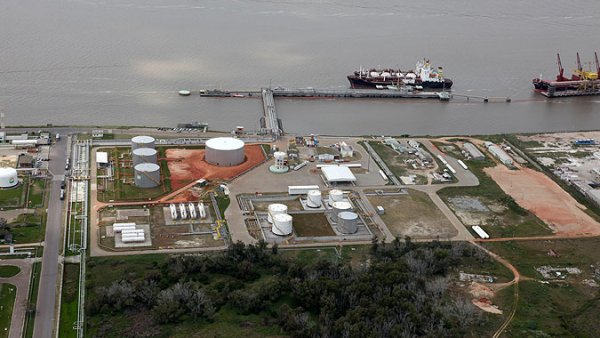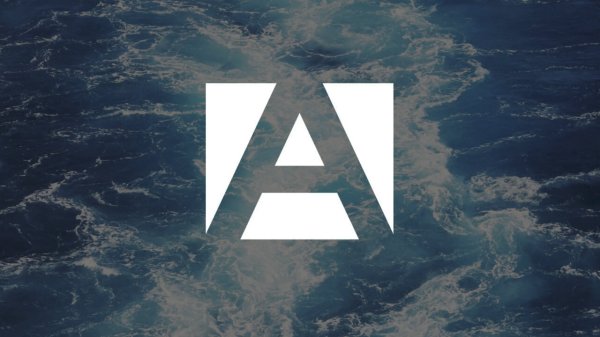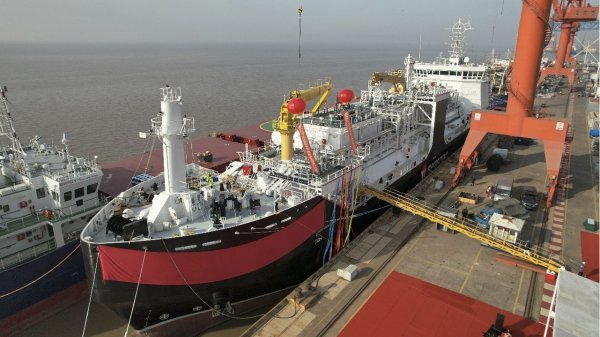Scrubber strategy pays off for Rosyth - Zeebrugge route
Route is in profit for the first time, thanks in no small measure to the use of cheaper fuels.
DFDS Group reports that the Rosyth - Zeebrugge route is in profit for the first time, thanks in no small measure to its recent investment in scrubber technology, which means its vessels are now allowed to burn cheaper intermediate fuel oil (IFO) despite the introduction of tougher legislation on sulphur limits in marine fuel requiring the use of more expensive distillates.
"The stricter EU legislation on sulphur, introduced in 2015, and the associated additional costs jeopardised the future of the route," the company explained. "In consultation with the Scottish Government, DFDS and the port of Rosyth therefore decided to invest 6 million euros in the route. The investment included a scrubber installation on board the ship, fuel optimisation and improved infrastructure in the Scottish terminal."
Tougher limits on the sulphur content of marine fuels (0.1 percent) in Emissions Control Areas (ECAs), which entered into force in January 2015, means that only vessels with an exhaust gas cleaning system - also known as a scrubber - installed are permitted to use fuels with a sulphur content above 0.1 percent.
In its 2015 annual report, DFDS explained "With effect from 1 January 2015, a new set of rules limited the allowed sulphur content in ship's fuel to 0.1% from the previous limit of 1.0% in SECAs (Sulphur Emission Control Areas). These areas include the Baltic Sea, the North Sea and the English Channel, all primary market areas of DFDS. The transition to the new rules went smoothly as there was widespread acceptance among market participants of the new, more environmentally friendly regime. In addition, the transition to the more expensive MGO fuel (marine gas oil) was mitigated by the drop in the oil price that started in 2014 and continued in 2015."
On its scrubber strategy, DFDS said: "By the end of 2015, DFDS had installed 17 scrubbers totalling an investment of DKK 568m. A scrubber installation removes sulphur dioxide from ships' exhaust gases and thus allows for the use of lower cost fuels with a higher sulphur content. Due to the price spread between MGO and lower cost fuels, the financial return target of the scrubber strategy was achieved in 2015."
Image: MS King of Scandinavia, a DFDS Seaways vessel
"The stricter EU legislation on sulphur, introduced in 2015, and the associated additional costs jeopardised the future of the route," the company explained. "In consultation with the Scottish Government, DFDS and the port of Rosyth therefore decided to invest 6 million euros in the route. The investment included a scrubber installation on board the ship, fuel optimisation and improved infrastructure in the Scottish terminal."
Tougher limits on the sulphur content of marine fuels (0.1 percent) in Emissions Control Areas (ECAs), which entered into force in January 2015, means that only vessels with an exhaust gas cleaning system - also known as a scrubber - installed are permitted to use fuels with a sulphur content above 0.1 percent.
In its 2015 annual report, DFDS explained "With effect from 1 January 2015, a new set of rules limited the allowed sulphur content in ship's fuel to 0.1% from the previous limit of 1.0% in SECAs (Sulphur Emission Control Areas). These areas include the Baltic Sea, the North Sea and the English Channel, all primary market areas of DFDS. The transition to the new rules went smoothly as there was widespread acceptance among market participants of the new, more environmentally friendly regime. In addition, the transition to the more expensive MGO fuel (marine gas oil) was mitigated by the drop in the oil price that started in 2014 and continued in 2015."
On its scrubber strategy, DFDS said: "By the end of 2015, DFDS had installed 17 scrubbers totalling an investment of DKK 568m. A scrubber installation removes sulphur dioxide from ships' exhaust gases and thus allows for the use of lower cost fuels with a higher sulphur content. Due to the price spread between MGO and lower cost fuels, the financial return target of the scrubber strategy was achieved in 2015."
Image: MS King of Scandinavia, a DFDS Seaways vessel

|
IMO approves pricing mechanism based on GHG intensity thresholds
Charges to be levied on ships that do not meet yearly GHG fuel intensity reduction targets. |
|
|
|
||

|
VARO Energy expands renewable portfolio with Preem acquisition
All-cash transaction expected to complete in the latter half of 2025. |
|
|
|
||

|
NYK trials biofuel in milestone coal carrier test
Vessel is used to test biofuel for domestic utility company. |
|
|
|
||

|
H-Line Shipping orders LNG bunkering vessel
Vessel with 18,000-cbm capacity to run on both LNG and MDO. |
|
|
|
||

|
How to engineer and manage green shipping fuels | Stanley George, VPS
Effective management strategies and insights for evolving fuel use. |
|
|
|
||

|
Swedish government bans scrubber wastewater discharges
Discharges from open-loop scrubbers to be prohibited in Swedish waters from July 2025. |
|
|
|
||

|
MAN Energy Solutions achieves 100% load milestone for ammonia engine
Latest tests validate fuel injection system throughout the entire load curve. |
|
|
|
||

|
Petrobras secures ISCC EU RED certification for B24 biofuel blend at Rio Grande
Blend consisting of 24% FAME is said to have been rigorously tested to meet international standards. |
|
|
|
||

|
Stolt-Nielsen to fully control Avenir LNG with acquisition
Share purchase agreement to buy all shares from Golar LNG and Aequitas. |
|
|
|
||

|
Bureau Veritas supports launch of CIMC SOE's LNG bunkering vessel
Handover of Seaspan Energy's cutting-edge 7,600-cbm vessel completed. |
|
|
|
||
Related Links
- · DFDS reports decline in bunker consumption [Insights]
- · Scrubber technology for Finlandia Seaways [Insights]
- · DFDS chooses fuel-saving solutions [Insights]
- · DFDS orders exhaust gas cleaning systems [Insights]
- · DFDS crew save fuel with operational tweaks [Insights]
- · United Kingdom [Directory]
- · Belgium [Directory]
- · Rosyth [Directory]
- · Zeebrugge [Directory]

